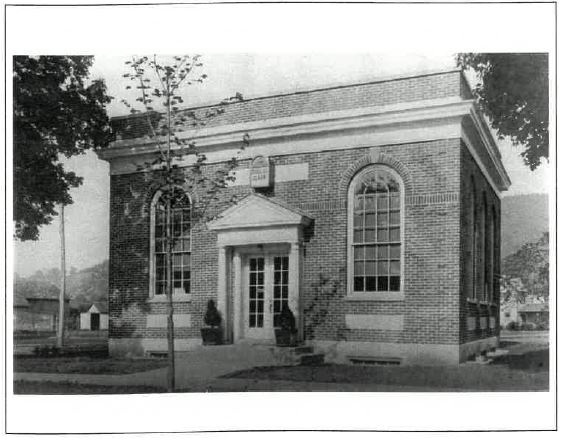Picture Rocks was incorporated as a borough on September 27, 1875 from Wolf Township, but its history began a century earlier. The earliest settlers, who arrived in 1773, observed Indian pictographs (no longer existant) in the Muncy Creek valley, and the borough occupies the site of a Munsee Indian village. Evidence of this is found in the arrowheads and other relics that have been found in the vicinity of the creek.

The first warrant for property in the Picture Rocks area was issued by the Province of Pennsylvania to Henry Rody on June 3, 1773. The land was used very little and passed through several hands until 1848 when it was sold to A. R. Sprout and Amos Burrows who went on to become the founding fathers of Picture Rocks. Sprout and Burrows worked to clear the land that was thought to be worthless of the rocks, logs and brush that covered it. They also rebuilt an abandoned sawmill and established a factory that manufactured sashes, doors, and window blinds. This planning mill, the first of its kind in the area, caused a stir among the local carpenters who believed that the ready-made building materials would curtail their profitability. The planning mill remained in operation until 1920. Another water powered mill was built in 1856 along Main Street at the bridge for the manufacture of high-quality furniture by Amos Burrows and his son, Sabin. This factory continued in operation until 1939.
In 1857, ASA R. Sprout built a steam powered mill at the corner of Center and Elm Streets to make berry boxes, egg crates, and other wood products. In 1870, this factory, through a change in ownership, made tool handles. Changing hands again in 1887, it became the handle and Excelisor Company. In 1939, this business was moved into the vacant Borrows Furniture factory and continued operation until 1984.
In 1873, John P. Little and Samuel Sprout built a steam powered factory at the northeast corner of Main and Factory Streets for the making of wagon bows, wagon wheels fellows and hubs, and sleigh and buggy parts. Later it made folding ladders and clothes drying racks and continued in operation until it burnt in 1966.
The town grew up around these factories and soon other manufacturers arrived to harness the water power provided by Muncy Creek. People interested in purchasing lots in Picture Rocks were required to sign an agreement stating that they would not open a saloon or engage in the trafficking of liquor. This law was made by the residents and founders of the town, a majority of them being Baptists.
The Baptists of Picture Rocks organized in 1840 and met for a while in a schoolhouse. A traveling preacher arrived in Picture Rocks one Saturday evening and found the school to be unfit for Sunday gatherings. After preaching on the following morning, he rallied the members of the congregation around the cause of building a proper house of worship. Under the guidance of their new pastor, the members of the Baptist Church built a log church at the northeast corner of Main Street and Taylor Hill Road that was used until its replacement in 1884 by the present church on Elm Street.

At the time of the borough’s creation, Center Street was considered the main street for travelers. The original homes built by the Burrows and Sprout families still exist along Center Street and are easy to identify based upon their square shape with low pitched roof often with a widow’s peak or lookout.
Borough resident John Wesley Little achieved regional fame for his watercolor landscapes and images of rural farms and animals. His studio/home is located along Water Street. His original paintings are highly sought after at local auctions.
The borough boasts two churches, the Baptist Church on Elm Street and the Methodist Church on Laurel Street.
Located within the East Lycoming School District, Picture Rocks is home to George A. Ferrell Elementary School. This K-6 elementary school is recognized as a National Blue Ribbon School. The school was originally a fully inclusive school for students in first through twelfth grades with its own sports program. The school joined with others in neighboring Hughesville and nearby Lairdsville to form the East Lycoming School District.